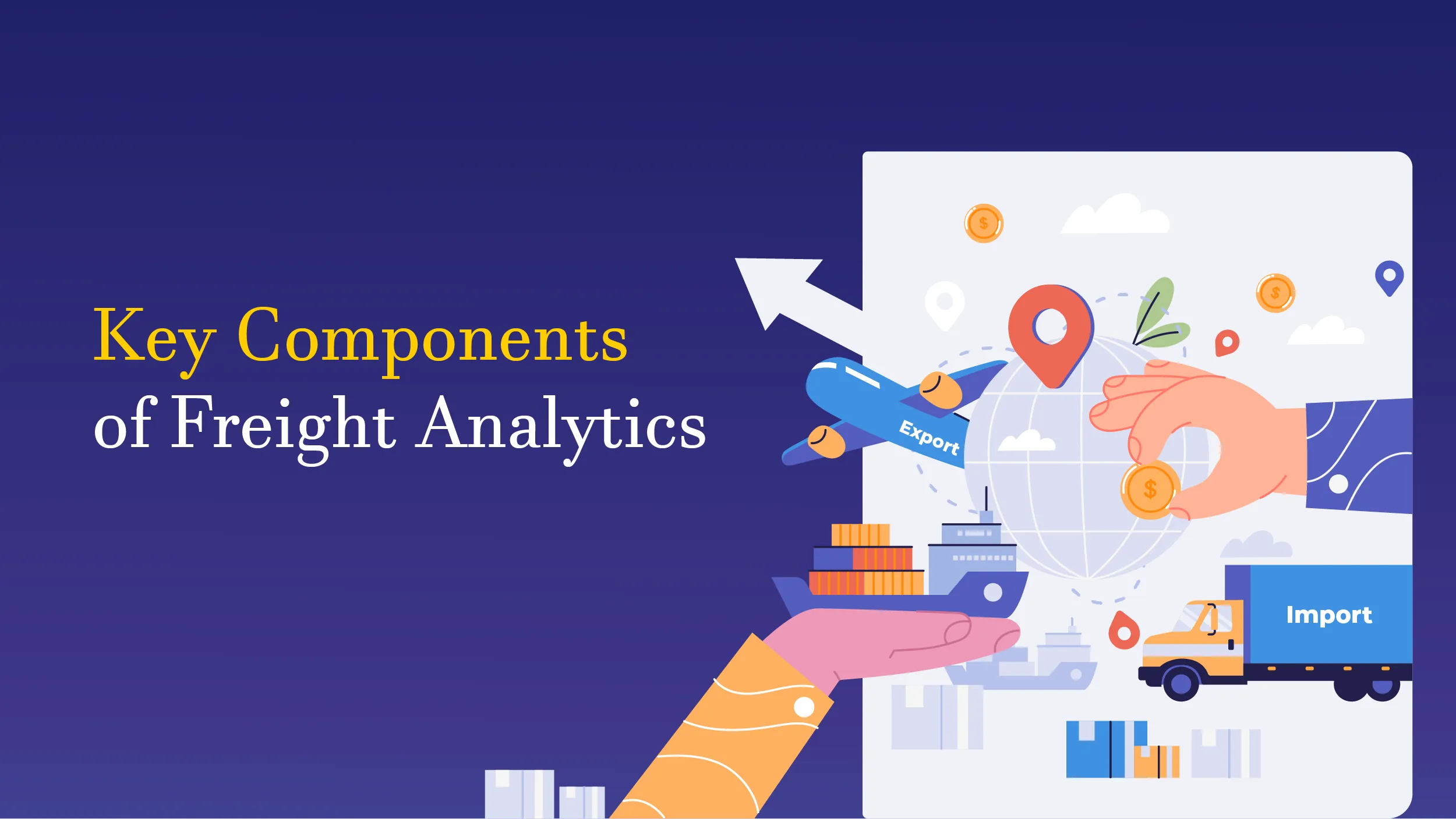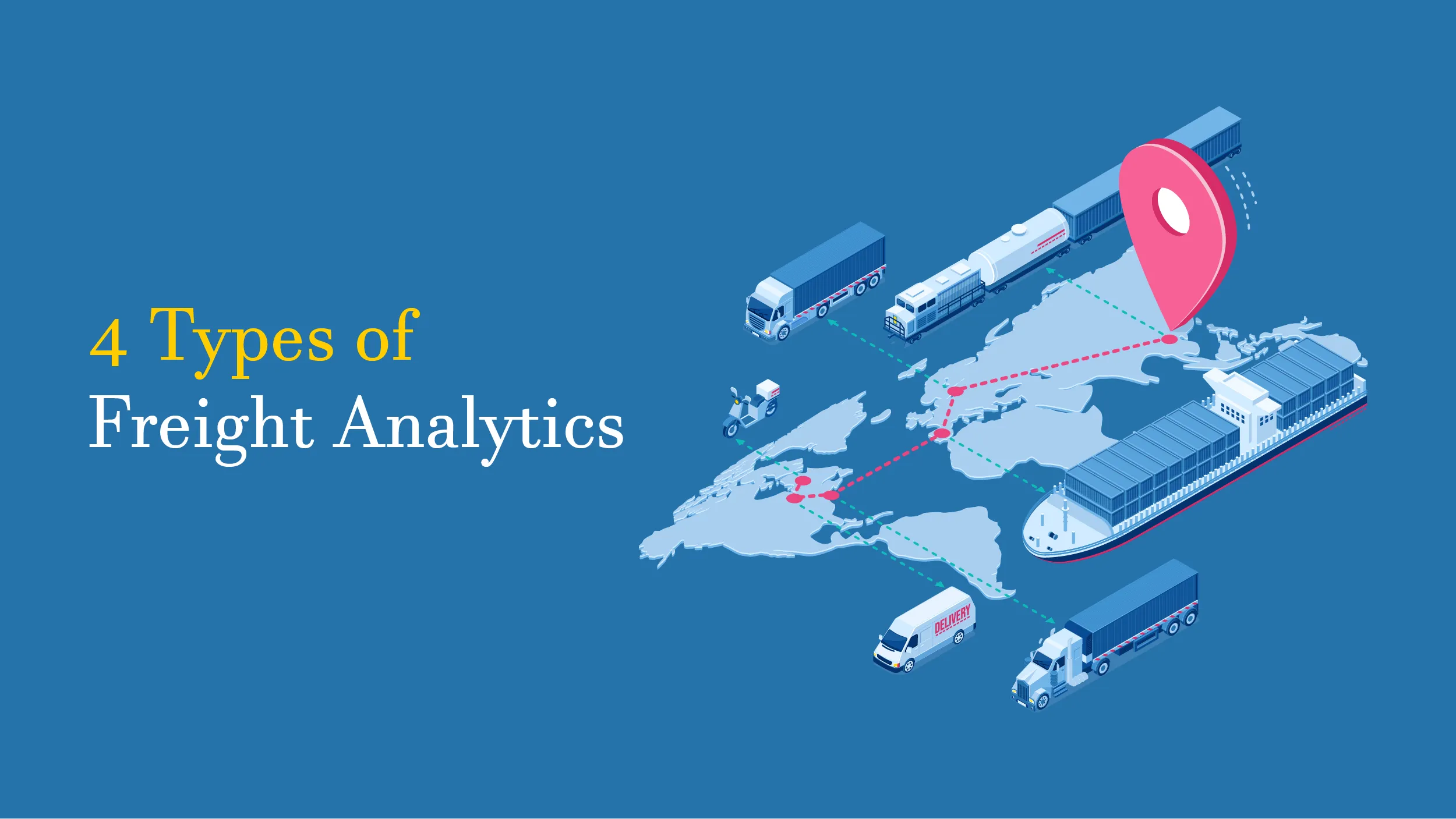What is freight analytics and how does it improve supply chain management?
Freight analytics is the basic, strategic process of analyzing data regarding the movement of goods. The data collected is crucial for maintaining supply chain efficiency and reducing costs. This blog focuses on cost optimization, freight routing, performance metrics, and real-time tracking. Understanding these components helps businesses bring about positive changes in their freight operations and improve supply chain management. Here are several ways in which freight analytics enhances supply chain management:
Enhanced Visibility – Freight analytics enables real-time tracking and reporting. This gives stakeholders transparency in the supply chain. Visibility helps find bottlenecks or delays early on in the supply chain. It allows for adjustments to keep operations smooth.
Performance Monitoring – By comparing KPIs, businesses can measure carriers’ performance. These KPIs include the rate of on-time deliveries and port dwell times. This helps them decide which carriers to use for specific shipments.
Sustainability Tracking – The shipping industry accounts for over 80% of the world’s trade volume and nearly 3% of global greenhouse gas emissions, with emissions escalating by 20% in just a decade. This gives rise to concerns regarding the overall carbon footprint of the maritime industry and its implication for the environment and public health.
Many freight analysis tools can track carbon emissions and fuel use. This helps companies align their operations with environmental goals while cutting costs.
Improved Decision Making– Insights from freight analytics empower organizations to make data-driven decisions. This boosts operational efficiency. For example, prescriptive analytics might suggest the best shipping route based on current conditions. This would help businesses with complex logistics challenges.
Key Components of Freight Analytics

Shipment Tracking and Visibility: It concerns the movement of shipments, real-time visibility, and tracking. It uses real-time GPS, IoT sensors, and other devices for tracking the status, location, and condition of goods during delivery. This increases the accuracy of delivery, enhancing customer satisfaction and operational efficiency.
Route Optimization: Freight analytics includes algorithms that help optimize the best routes to transport goods. These include traffic, weather, fuel costs, road conditions, and delivery deadlines. They aid in reducing costs, improving delivery times, and minimizing emissions.
Carrier Performance Analysis: It assesses the performance of carriers, such as trucking companies, shipping lines, air freight, and other forms of carriers. It helps businesses compare the reliability and efficiency of each carrier by using historical data about the delivery time, damage rate, cost, and other factors.
Cost Analysis and Forecasting: Freight analytics tools gather information regarding transportation costs, which include fuel, tariffs, labor, maintenance, and shipping costs. By analyzing these, companies will be able to determine the trends and future costs and then make a budgeting and pricing strategy in order to improve profitability.
Supply Chain Integration and Optimization: Freight analytics integrates transportation data with broader supply chain operations. This component helps businesses optimize the entire supply chain, including inventory management, procurement, and order fulfilment. Analyzing the full supply chain allows companies to find areas for improvement, thereby reducing lead times and operational costs.
Risk Management and Compliance: This component looks at risk mitigation and identification regarding freight and transportation. It examines data that deals with compliance, such as customs, safety standards, environmental regulations, security risks, and various operational disruptions, like delays, strikes, or natural disasters.
Also Read: Why Every Business Needs to Embrace AI in Inventory Management—Before It’s Too Late!
4 Types of Freight Analytics:

1) Descriptive analysis
It analyzes the previous year’s delivery times. Examples of descriptive analytics exist in every aspect of the business, from finance to production and sales, including the following. Business reports regarding revenues and expenses, cash flows, accounts receivable, accounts payable, inventory, and production, Examples of descriptive analytics include financial metric and other business KPIs.
2) Diagnostic Analysis
Dives deeper into data to better understand the main causes behind specific events or happenings. For example, using diagnostic analytics, you can study past data to identify irregularities, expense patterns, or budget variances within different departments. This will help you identify the areas where capital leaks are occurring and take the necessary measures—like revising budget allocations or implementing cost-saving strategies.
3) Predictive Analysis
It uses artificial intelligence (AI) to predict future trends, determining the outcomes from current and historical data. This method is used to predict potential service failures, provides real-time insights into status of shipments, sends alerts ahead of failures to minimize loss. Many companies leverage AI capabilities to help ocean freight vessels reduce fuel consumption. For example, DeepSea, a Greek provider uses its AI tools to reduce fuel consumption of the ocean fleet by 10%
4) Prescriptive Analysis
Not only does it predict the upcoming events but also gives corrective measures for the same. For example, if a logistics company uses prescriptive analysis, it can find the best and cheapest shipping routes. Banks and other related institutions use prescriptive analytics. Thus, by analyzing factors, including credit history and certain trend in the economy, it is possible for the bank to predict loan defaults that would enable them to implement alterations in lending policies appropriately.
How often should shippers conduct a freight analysis?
Proper frequency is a key factor in freight analysis. Shippers should conduct a complete analysis on an annual basis. It should align with their business goals and adapt to market, tech, and strategic changes. The ideal frequency may vary from specific circumstances. Market dynamics, fuel prices, and technological advancements require constant reviews. Adapting to changing trends in the industry and business strategies keeps logistics agile, which enables shippers to optimize efficiency and stay competitive in the global market.
Benefits of Freight Analysis
Integrating freight analysis into the logistics playbook has many benefits. It transforms how businesses manage their supply chains. The benefits include:
Customer Satisfaction – Freight analytics has a positive effect on customer satisfaction. Businesses can improve customer service by ensuring on-time delivery. They should reduce errors and manage disruptions in advance. The result not only satisfies customers but also enhances brand reputation and loyalty.
Increased visibility and transparency – Businesses can use diagnostic analytics to resolve issues efficiently. This improves the supply chain’s visibility and resilience. Freight analytics gives stakeholders real-time visibility into goods’ movement. It is vital for spotting bottlenecks, delays, or schedule deviations.
Savings and cost reduction – Finding areas for cost savings is one of the most obvious advantages of freight analysis. Organizations can identify inefficiencies by examining data. This includes unused transportation resources and delays. Consequently, this enables resource optimization and strategic modifications.
Improving operational efficiency – Freight analysis helps to increase efficiency and provides real-time insights into the movement of goods. It optimizes route planning, load balancing, and resource allocation.
Conclusion
Today, businesses must use freight analytics as the logistics landscape evolves. Understanding and implementing freight analytics is necessary to survive in a competitive environment. It can improve visibility, streamline operations, and support better decisions. Ultimately, this will help businesses boost efficiency and drive profitability.




